Naples
Copyright: ilolab/Shutterstock.comNaples
Naples' ancient streets echo its Greco-Roman heritage, while its vibrant neighbourhoods pulse with modern Italian energy. Discover the famous Mount Vesuvius, explore picturesque castles, museums, and churches, savour sumptuous Neapolitan cuisine, and take a day trip to the charming island of Capri, Naples' unique blend of tradition and vitality makes it an unforgettable destination for art, history, and culinary enthusiasts alike.The City
The historic city of Naples was founded about 3,000 years ago as Partenope by Greek merchants. Later, the settlement took the name of Palepolis, the old city, and in 475 BC it became Neapolis, the new city. Under various phases of foreign rule, the city developed continuously, until it became the capital of the most important of the pre-unification states, the Kingdom of the Two Sicilies. The rulers of that Kingdom, the Bourbons, constructed a magnificent palace in nearby Caserta and filled the city with historic structures of all kinds.Do & See
The historic centre of Naples, with its splendid palaces and its popular and lively working-class districts, is now on the list of UNESCO World Heritage Sites. Naples also boasts an underground city, as well as its famous panoramic views. Moreover, this hospitable city is marked by contrasts and popular traditions, such as the annual miracle whereby San Gennaro's 'blood' becomes liquid in front of the eyes of his followers. Naples is famous throughout the world primarily because of pizza (which, you'll discover, only constitutes a small part of the rich local cuisine) and popular music, with famous songs such as 'O Sole Mio'.
Dining
Neapolitans believe their cuisine to be among the finest in the world. The best way to decide if you agree with them is by tasting some of the local specialities, which include pasta recipes (with the 'pummarola' tomato sauce, or 'alla puttanesca' with olives and capers), typical pastries like babà or sfogliatella, and of course, an authentic pizza, which made its appearance in Naples over 500 years ago. Neapolitan cuisine proudly uses modest ingredients such as oil, pecorino cheese, and aromatic herbs to convey its typical Mediterranean taste.
Cafés
Naples bristles with great coffee, or rather 'caffè', which means 'espresso' there. The most popular coffee types in Naples are 'caffè ristretto' (a short shot of a more highly concentrated espresso coffee), 'caffè lungo' (espresso coffee drink with more water), and 'caffè macchiato' (espresso coffee drink with a small amount of milk, usually foamed).
Bars & Nightlife
Neapolitan nightlife is vibrant and packed with people. It starts teeming around 8 pm in the Chiaia area — coming for a drink, you might have the impression that the whole neighbourhood has descended into the tiny space around via Belledonne a Chiaia for an aperitivo. Another crowded area is Piazza Bellini, especially in summer and springtime.
Shopping
If you're looking for fashionable clothes, accessories, or jewellery, head to Via Calabritto, Via Filangieri, Via Chiaia, and Via Toledo, where you'll find plenty of fashion brands. In the same area, two boutiques boast impressive local collections. One of them is called Ernesto Esposito (Via Cavallerizza a Chiaia, 51), and showcases the sexed-up heels created by its namesake designer, a Neapolitan who also works for Fendi, Sonia Rykiel, and Via Spiga. The other one, Marinella (Riviera di Chiaia, 287a), is a tiny shop with a huge reputation for its classic men's accessories and, especially, silk ties. A huge flea market with good bargains is found close to the Poggioreale jail and runs from Thursday through Monday. For typical handmade products, the best place to go is the Quartieri Spagnoli. This area still has the highest number of old craftsmen’s shops. The sophisticated, expensive Capodimonte porcelain, cameos and gouaches are particularly famous. Naples is also tied to the traditions of leather goods, as well as gold and silver objects. And if you're interested in buying the famous nativity scene figurines made in terracotta you should visit Via San Gregorio Armeno. Here, you can find all types of figurines, all made by hand.

 Copyright: America Studio/Shutterstock.com
Copyright: America Studio/Shutterstock.com
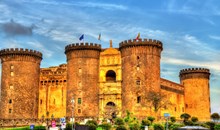 Copyright: Leonid Andronov/Shutterstock.com
Copyright: Leonid Andronov/Shutterstock.com
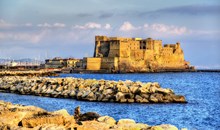 Copyright: Leonid Andronov/Shutterstock.com
Copyright: Leonid Andronov/Shutterstock.com
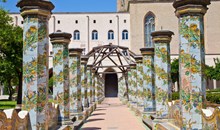 Copyright: Paolo Gallo/Shutterstock.com
Copyright: Paolo Gallo/Shutterstock.com
 Copyright: Matyas Rehak/Shutterstock.com
Copyright: Matyas Rehak/Shutterstock.com
 Copyright: edella/Shutterstock.com
Copyright: edella/Shutterstock.com
 Copyright: Izim M. Gulcuk/Shutterstock.com
Copyright: Izim M. Gulcuk/Shutterstock.com
 Copyright: Rrrainbow/Shutterstock.com
Copyright: Rrrainbow/Shutterstock.com
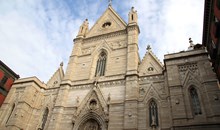 Copyright: Franxyz/Shutterstock.com
Copyright: Franxyz/Shutterstock.com
 Copyright: Tatsuo Nakamura/Shutterstock.com
Copyright: Tatsuo Nakamura/Shutterstock.com
 Copyright: Vitsirisukodom/Shutterstock.com
Copyright: Vitsirisukodom/Shutterstock.com
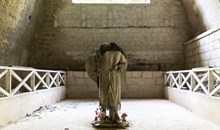 Copyright: Sviluppo/Shutterstock.com
Copyright: Sviluppo/Shutterstock.com
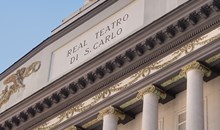 Copyright: Marina Burrascano/Shutterstock.com
Copyright: Marina Burrascano/Shutterstock.com
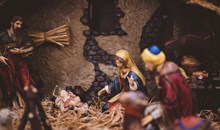 Copyright: Ben White/Unsplash
Copyright: Ben White/Unsplash
 Copyright: Boris Stroujko/Shutterstock.com
Copyright: Boris Stroujko/Shutterstock.com
 Copyright: Francesca Sciarra/Shutterstock.com
Copyright: Francesca Sciarra/Shutterstock.com
 Copyright: Leandro Neumann Ciuffo/CC BY 2.0/Wikimedia
Copyright: Leandro Neumann Ciuffo/CC BY 2.0/Wikimedia
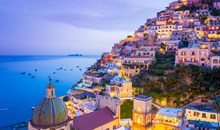 Copyright: ronnybas/Shutterstock.com
Copyright: ronnybas/Shutterstock.com
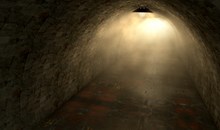 Copyright: Inked Pixels / Shutterstock.com
Copyright: Inked Pixels / Shutterstock.com
 Copyright: Versta / Shutterstock.com
Copyright: Versta / Shutterstock.com
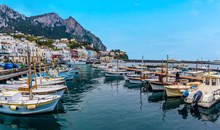 Copyright: Nicola Pulham / Shutterstock.com
Copyright: Nicola Pulham / Shutterstock.com
 Copyright: marmo81/Shutterstock.com
Copyright: marmo81/Shutterstock.com
 Copyright: allstars/Shutterstock.com
Copyright: allstars/Shutterstock.com
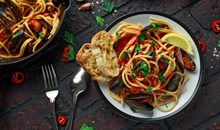 Copyright: DronG/Shutterstock.com
Copyright: DronG/Shutterstock.com
 Copyright: Luiz Rocha/Shutterstock.com
Copyright: Luiz Rocha/Shutterstock.com
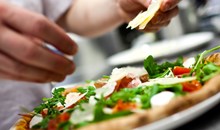 Copyright: Denizo71/Shutterstock.com
Copyright: Denizo71/Shutterstock.com
 Copyright: Romaset/Shutterstock.com
Copyright: Romaset/Shutterstock.com
 Copyright: PhotoEd/Shutterstock.com
Copyright: PhotoEd/Shutterstock.com
 Copyright: Andrey Bayda/Shutterstock.com
Copyright: Andrey Bayda/Shutterstock.com
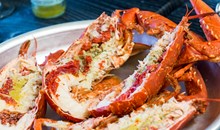 Copyright: from my point of view/Shutterstock.com
Copyright: from my point of view/Shutterstock.com
 Copyright: MartineDee / Shutterstock.com
Copyright: MartineDee / Shutterstock.com
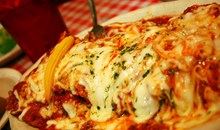 Copyright: Steve Snodgrass / Flickr.com
Copyright: Steve Snodgrass / Flickr.com
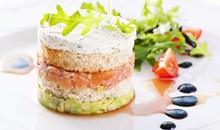 Copyright: hlphoto/Shutterstock.com
Copyright: hlphoto/Shutterstock.com
 Copyright: KarepaStock/Shutterstock.com
Copyright: KarepaStock/Shutterstock.com
 Copyright: PointImages/Shutterstock.com
Copyright: PointImages/Shutterstock.com
 Copyright: Fabio Alcini / Shutterstock.com
Copyright: Fabio Alcini / Shutterstock.com
 Copyright: baranq/Shutterstock.com
Copyright: baranq/Shutterstock.com
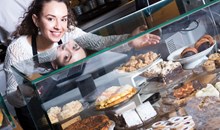 Copyright: Iakov Filimonov/Shutterstock.com
Copyright: Iakov Filimonov/Shutterstock.com
 Copyright: Africa Studio/Shutterstock.com
Copyright: Africa Studio/Shutterstock.com
 Copyright: Arina P Habich/Shutterstock.com
Copyright: Arina P Habich/Shutterstock.com
 Copyright: Monkey Business Images/Shutterstock.com
Copyright: Monkey Business Images/Shutterstock.com
 Copyright: Digoarpi/Shutterstock.com
Copyright: Digoarpi/Shutterstock.com
 Copyright: Cozy Home/Shutterstock.com
Copyright: Cozy Home/Shutterstock.com
 Copyright: Elena Veselova/Shutterstock.com
Copyright: Elena Veselova/Shutterstock.com
 Copyright: archimede/Shutterstock.com
Copyright: archimede/Shutterstock.com
 Copyright: Ivan Neru/Shutterstock.com
Copyright: Ivan Neru/Shutterstock.com
 Copyright: g-stockstudio/Shuttertock.com
Copyright: g-stockstudio/Shuttertock.com
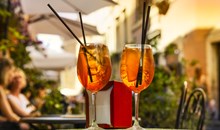 Copyright: ventdusud/Shutterstock.com
Copyright: ventdusud/Shutterstock.com
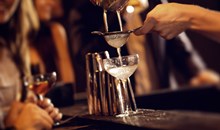 Copyright: Jacob Lund/Shutterstock.com
Copyright: Jacob Lund/Shutterstock.com
 Copyright: Arina P Habich/Shutterstock.com
Copyright: Arina P Habich/Shutterstock.com
 Copyright: wavebreakmedia/Shutterstock.com
Copyright: wavebreakmedia/Shutterstock.com
 Copyright: Wead/Shutterstock.com
Copyright: Wead/Shutterstock.com
 Copyright: EugeniaSt/Shutterstock.com
Copyright: EugeniaSt/Shutterstock.com
 Copyright: Natasha Breen/Shutterstock.com
Copyright: Natasha Breen/Shutterstock.com
 Copyright: Aurora Angeles/Shutterstock.com
Copyright: Aurora Angeles/Shutterstock.com
 Copyright: 2creative/Shutterstock.com
Copyright: 2creative/Shutterstock.com
 Copyright: Billion Photos/Shutterstock.com
Copyright: Billion Photos/Shutterstock.com
 Copyright: Ingrid Balabanova/Shutterstock.com
Copyright: Ingrid Balabanova/Shutterstock.com
 Copyright: Marcello/CC BY 2.0/Flickr
Copyright: Marcello/CC BY 2.0/Flickr
 Copyright: Voyagerix/Shutterstock.com
Copyright: Voyagerix/Shutterstock.com
 Copyright: elwynn/Shutterstock.com
Copyright: elwynn/Shutterstock.com
 Copyright: CHUTTERSNAP/Unsplash
Copyright: CHUTTERSNAP/Unsplash
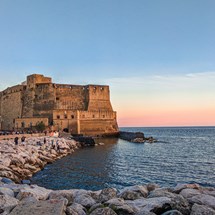 Copyright: Vincenzo De Simone/Unsplash (cropped)
Copyright: Vincenzo De Simone/Unsplash (cropped)
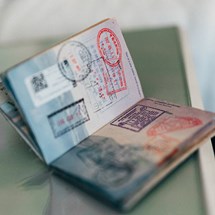 Copyright: ConvertKit/Unsplash
Copyright: ConvertKit/Unsplash
 Copyright: Ant Rozetsky/Unsplash
Copyright: Ant Rozetsky/Unsplash
 Copyright: Maik Winnecke/Unsplash
Copyright: Maik Winnecke/Unsplash
 Copyright: Simona Sergi/Unsplash
Copyright: Simona Sergi/Unsplash
 Copyright: Dima Mukhin/Unsplash
Copyright: Dima Mukhin/Unsplash
 Copyright: Wesley Hilario/Unsplash
Copyright: Wesley Hilario/Unsplash
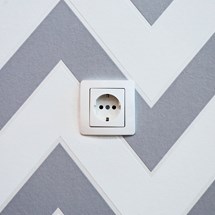 Copyright: Neven Krcmarek/Unsplash
Copyright: Neven Krcmarek/Unsplash